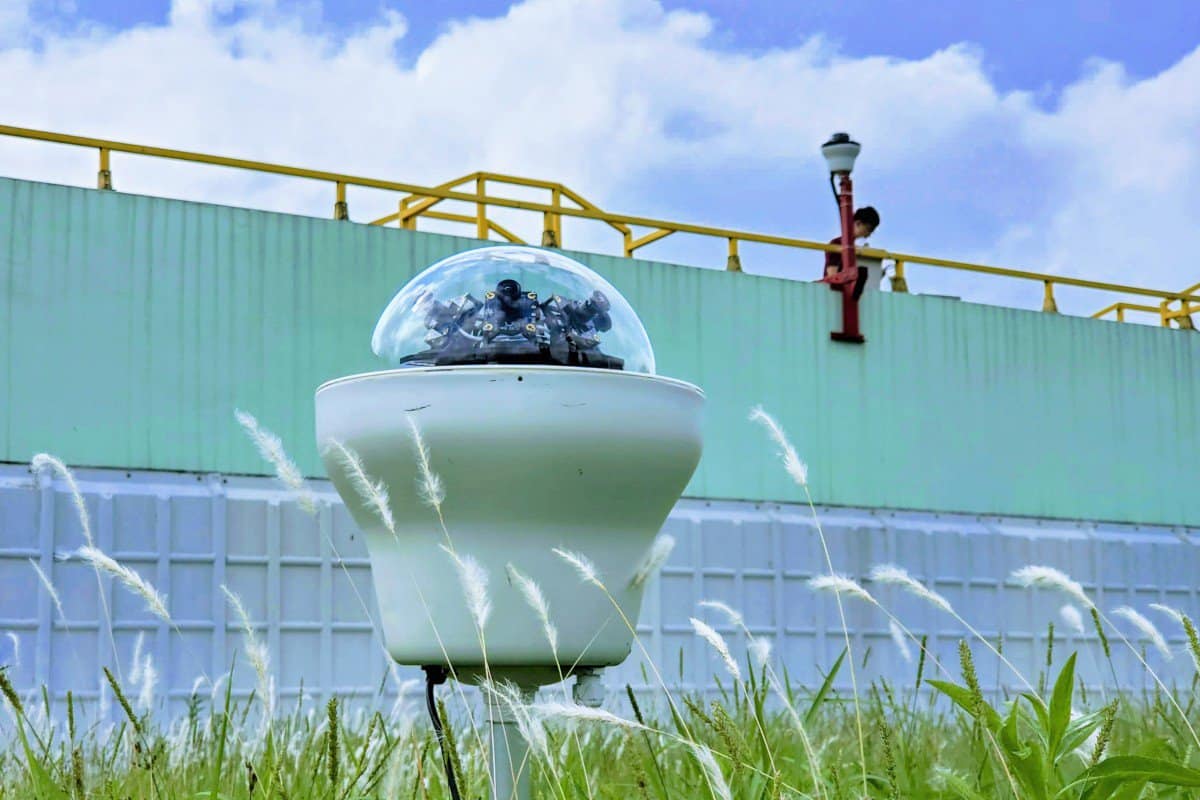
Armed with six eyes and the ability to hear and feel, a device powered by artificial intelligence lurks among waterbirds at Penfold Park in Sha Tin, as part of a government pilot project for conservation.
The AI system identifies, tracks and analyses birds at the park, one of the largest habitats for egrets in the city. The machine is shaped like a flower pot, packed with six cameras, sound and vibration sensors, and shielded from the elements by a glass dome.
The Drainage Services Department, which has a sewage treatment plant near the park, has been testing the system for almost a year to devise conservation measures for a project to relocate its facility to a nearby cavern.
“We hope to do more to monitor birds comprehensively, over a longer period of time and regardless of weather, by introducing AI technology,” said Carol Yip Lai-yuk, engineer of the department’s sewerage projects division.
Observers have said the latest scheme was part of the government’s ongoing effort to encourage innovation and build a smart city.
The treatment plant is located less than 500 metres from the park, and lies under the daily flight path of egrets.
The department invited a team at the Hong Kong University of Science and Technology to develop the tracking system, which now includes about 15 devices in and around the park, as well as a data centre.
The team taught the AI system how to identify different species through deep learning, in which a myriad of pictures and 3D models of birds in various backgrounds are fed into its database.
“It’s just like a human being,” said Professor Wang Yu-Hsing, associate head of the department of civil and environmental engineering. “If you can see more, you understand more.”
Wang said the system could now accurately identify a species more than 90 per cent of the time, as long as the bird was in full view. If part of the animal’s body is hidden from its cameras, the rate drops to 70 to 80 per cent.
“We have confidence that with more observation, the accuracy will increase,” Wang said.
The device can also cross-check calls of different species and track the movement of an individual to avoid double counting when recording an inventory of a group of birds.
Species identified at the park include the great egret, little egret, Chinese pond heron, black-crowned night heron and grey heron. The department said it was unable to provide exact population figures as this was still under analysis.
Wang said some behaviour unique to birds at the park had been observed. For instance, some appeared to be undisturbed by dogs barking – an unexpected behaviour as most birds are easily startled – because the area is frequented by dog walkers.
Yip said the AI system could collect data 24 hours a day over a long period of time, compared with human workers.
With comprehensive data on the number and behaviour of waterbirds, Yip said, the department could devise impact mitigation measures such as reducing the use of shiny materials and construction noises when the animals were most active around the plant.
The pilot scheme is expected to conclude at the end of the year, Yip said. She added the department would see if the collected data matched an earlier survey conducted by a consultant.
“Quite a lot of our projects involve bird conservation,” she said. “If the study is successful, we won’t rule out using the system for other projects.”
The relocation of the plant to a cavern in nearby Nui Po Shan aims to release a 28-hectare site for housing and community facilities.
Developing caverns is one of eight ways to source land for the space-starved city, as recommended by the government-appointed Task Force on Land Supply in December after a public consultation.
The first phase of the project, which involves building roads to the proposed cavern and related protective works, began in February. The whole project is expected to last more than a decade.
Woo Ming-chuan, the Hong Kong Birdwatching Society’s senior conservation officer, said if the system’s accuracy was proved, it could come in useful when birds needed to be observed in places or angles inaccessible to humans, or when population numbers were too large to count manually.
“It could help monitor birds over a long time and at night,” she said.
But Woo voiced concern that the devices might be prone to glitches.
IT sector lawmaker Charles Mok said different government departments had been exploring technologies such as AI recently. The Civil Engineering and Development Department, for example, had been using AI to identify dangerous slopes, he said.
“It is a good sign,” Mok said. “It shows that the government is making an effort to develop a smart city.”

